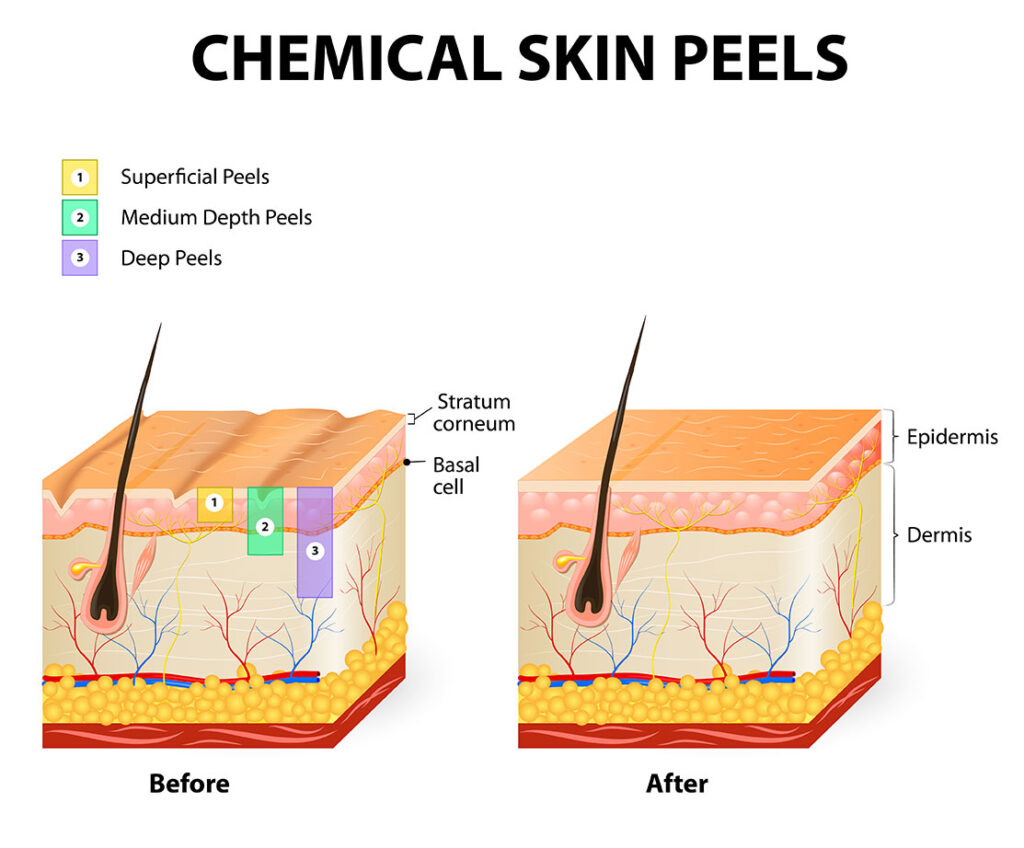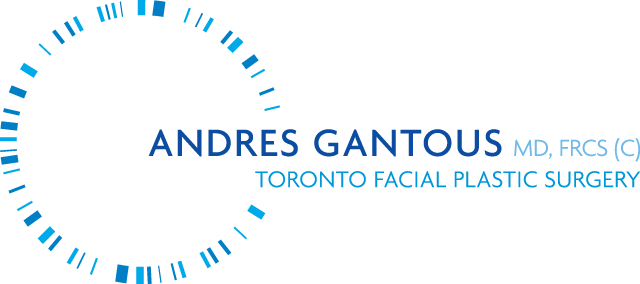What Is a Chemical Peel?
Chemical peels are extensive methods that are applied to the skin with the intent of improving its appearance and creating a smoother and more radiant result. This is achieved by applying chemical compounds that are formulated to exfoliate the skin and remove the top layers that have been damaged due to prolonged exposure to the sun and other factors. The new skin that’s now exposed can be extremely sensitive to the sun and certain skin products, so it’s recommended that you take special precautions under the advisement of your facial plastic surgeon or healthcare professional to appropriately care for it.
"*" indicates required fields

Types of Chemical Peels
Before you can decide whether or not getting a chemical peel is the right option for you, you should thoroughly research all of the different variations of this procedure. Of course, your facial plastic surgeon will also take the time to carefully examine the current condition of your skin and weigh that against the type of procedure that’s required. The type of chemical peel you need depends entirely on what you’re hoping to accomplish and the severity of the damage your skin has endured over time. Keep in mind that chemical peels aren’t permanent solutions to your skin problems and you’ll need to get them done on a regular basis as recommended by your doctor. There are a few broad classifications when it comes to types of chemical peels:
- Superficial Peel: This is also referred to as the “lunchtime peel” because it takes the least amount of time to perform. Mild acids such as alpha-hydroxy is used to permeate the surface layer of skin with the intent of exfoliating and either removing or healing the damaged portions of it. This particular treatment is most effective to remove skin damages caused by external factors such as the sun or superficial scarring. It can be used to rejuvenate the skin on the face, neck, hands, and chest.
- Medium Peel: Medium peels employ trichloroacetic or glycolic acid to penetrate the top and middle layers of the skin with the intent of removing damaged skin cells on a slightly deeper level. This type of treatment is most effective for reducing the look of aging; removing deep-seated fine lines and wrinkles; treating skin discolouration; and even alleviating or smoothing out potentially cancerous skin growths.
- Deep Peel: As the name implies, this is the strongest type of chemical peel you can get. It involves applying either phenol or trichloroacetic acid to the middle layer of skin and allowing it to penetrate deeper with the intent of removing all dead or inactive skin cells that are causing damage. Used to combat all signs of aging including sagging skin, fine lines, wrinkles, freckles, and even mild scarring, patients will immediately notice a remarkable improvement and radiance in the look and feel of their skin. However, this procedure is only used on the face and can’t safely be done more than once in your lifetime.
The following is a list of chemical peeling agents that are used in industry-wide applications:
- Glycolic Peel
- Trichloroacetic Acid (TCA)
- Vitalize Peel
- Pigment Balancing Peel
What Skin Conditions Can Be Treated with a Chemical Peel?
Pretty much any mild or serious skin condition you can think of (except third-degree burns) can be treated with a variation of the abovementioned chemical peels. As mentioned, before you can ever undergo a chemical peel, however, you need to consult a dermatologist or facial plastic surgeon. Only after they’ve carefully examined the condition of your skin and the extent of the damage incurred can they make a proper chemical peel recommendation and perform the procedure. Patients typically undergo chemical peels to alleviate the effects of a number of skin conditions, some of which are much easier to treat than others. These can include:
- To reduce the appearance of redness and acne scars
- As a treatment method to relieve rosacea
- To reduce the seven signs of aging (dark spots, sagging skin, dull skin, chronically dry skin, patchy skin, and open pores)
- Reducing or eliminating the look of crows’ feet
- Removing or reducing the look of freckles, which are often caused by overexposure to the sun
- Treating melasma (dry, dark, gray or brown patch formations on the skin that usually appear on the face, most prominently the cheeks)
How to Choose the Right Chemical Peel for Your Skin
There are a few different factors that both you and your facial plastic surgeon need to take into consideration when it comes to choosing the right chemical peel for your skin. First and foremost, they’ll need to test the sensitivity of your skin. If you have a hard time using most cosmetic products such as facial cleansers or moisturizers on your skin—even those that are specially formulated for sensitive skin—then getting a chemical peel might not be the best option as it could exacerbate the issue and cause a negative reaction. The second factor you need to take into account is your reason for wanting to do the chemical peel in the first place. Ask yourself what your personal goals are for this procedure and what you’re hoping to get out of it. Once you’ve sorted all of that out on a personal level, then it’s time to book a consultation with your doctor and have them address all of your questions and concerns in an open and honest discussion.
Consulting the Right Specialist for the Job
After consulting with your doctor, they’ll be able to gain a clear understanding of what your expectations are and what can realistically be achieved. Not only that, but they’ll also be able to make appropriate recommendations to specifically treat your skin conditions whether your goal is to minimize the look of your wrinkles as much as possible or simply obtain a smoother and more supple result. Dr. Andres Gantous at the Toronto Facial Plastic Surgery clinic can help you achieve your skin refinement goals by administering a chemical peel in our state-of-the-art facility. He’s been considered one of the leading experts on skin rejuvenation both domestically and internationally for more than 20 years and he’s helped thousands of patients realize their dreams of having flawless, radiant skin. Contact us today to book a preliminary consultation.

